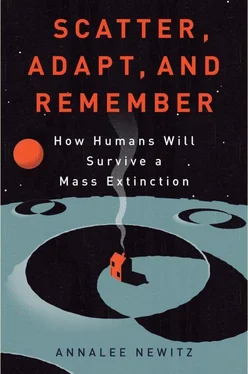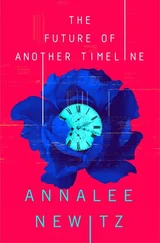One of the key indicators comes from satellite observations of greenery on the ground. Just as green roofs keep buildings cooler, a green ground cover keeps the soil cooler, wetter, and more likely to yield a good crop. When plants die back too much, drought may be on its way in the next season. McNally said the satellite she uses measures the wavelengths of light reflected back from the West African region she studies. Plants reflect green light back into space, where the satellites measure percentages of green light versus other wavelengths. As a result, McNally can get an extremely precise picture of how much green is required on the ground to guarantee a good growing season. The big issue in Africa is that most regions don’t use extensive irrigation, so farmers are dependent on rainfall for a successful crop. A dry season can mean death. But it doesn’t have to.
Knowing we’ve got an impending drought might mean shoring up water supplies for irrigation that could keep a valuable plant cover protecting the soil. As our cities become more closely tied to their bioregions, science teams like the Climate Hazards Group could become crucial to urban planning. With the technology and data we have now, McNally said, “we can make predictions like ‘In the next twenty years, you’ll have five droughts, which is two more than usual.’” This kind of information could prove invaluable to farmers planning their water usage, or governments trying to set up trade arrangements with areas that won’t be affected by the drought. As we gather more data on how droughts happen, we may be able to make more accurate predictions about when famine is likely to strike—and stop it before it starts.
Satellite imagery and technology are not a panacea for food-security problems. In fact, as we discussed earlier, famine is usually caused by political and social upheaval. Fixing that will require more than good science. You could say the same thing about our energy problems. But it’s possible that our political priorities will change along with our changing urban environments.
As we move further into the future, our cities won’t just be swaddled in gardens and farms. They might also become biological entities, walls hung with curtains of algae that glow at night while sequestering carbon, and floors made from tweaked cellular material that strengthens like bones as we walk on it. New York architect David Benjamin is part of a new generation of urban designers who collaborate with biologists to create building materials of the future. I met him in Studio-X, a branch of Columbia University’s school of architecture located in a bare-bones whitewashed work space south of Greenwich Village. Students focused on monitors full of three-dimensional renderings of buildings, or sketched at drafting tables between concrete columns. It looked like the kind of place that could, in 50 years, be sprouting a layer of grass from its walls—or something much stranger than that.
Benjamin described the shift to biological cities using quick, precise gestures that reminded me of someone penciling lines on a blueprint. “It might look the way it looks now,” he said. “The city could be made with bioplastics instead of petroleum plastics, but it would look very similar. A machine for making genetically modified organisms (GMOs) would exist in factories the way they do today for making medicine and biofuels.” So the plastic fittings around windows would be manufactured from modified bacteria rather than fossil fuels, but as a city dweller you’d notice little difference. Benjamin and a group of other architects and biologists have worked with Autodesk, the company that makes the popular AutoCAD software many architects use to design buildings, to create a mock-up of AutoCAD for biological designs, called BioCAD. Pulling out his laptop, Benjamin showed me a demonstration of the biological-design-software interface. The designer can choose between biological materials with different properties, like flexibility or strength. Having chosen those, the designer directs the program to create structures that look like marble cake, a multicolored swirl of substances combined into a single structure that gives in the right places and holds steady in others.
Over time, these living cities would start to look different. They’d be transformed by synthetic biology, a young field of engineering that crafts building materials from DNA and cells rather than more traditional biological materials like trees. Benjamin described a recently created synthetic-biology product called BacillaFilla, designed by a group of college students in England. The students engineered a common strain of bacteria to extrude a combination of glue and calcium when put into contact with concrete. They applied the bacterial goo to cracks in concrete, and over time it filled the cracks completely and then died, leaving behind a strong, fibrous substance that has the same strength as concrete. The students described BacillaFilla as the first step toward “self-healing concrete,” and their efforts are just one among many designed to create biological substances that could heal ship hulls, metal girders, and more.
Extrapolating from this development in synthetic biology, Benjamin mused, “Maybe you could program a seed to grow into a house. Or maybe cities would be so in tune with ecosystems that they would grow over time, and then decay over time, too.” Synthetic biology might also help solve one of the biggest problems with new buildings, which is water leakage. Architects could design a building that is semi-permeable, with membranes that allow the circulation of air and water at various times. It’s easy to imagine a future architect fashioning just such a thing with BioCAD, with patches of permeable materials built right into the fabric of the walls. The water could be purified and used, and the air would become part of a natural cooling or heating system. This building might also use computer networks to monitor its community of local buildings to figure out when to gather solar energy and send it to the grid to share, and when to lower louvers to keep residents cool. “I sometimes imagine urban landscapes that are integrated into their ecosystems with a combination of vegetation and constructed materials,” Benjamin said. “They look almost like ruins in the jungle but they’re actually fully functional, occupied cities.”
Benjamin’s visions of the future end where his fellow synthetic-biology designer Rachel Armstrong’s begin. Armstrong, who is based in London, is an outspoken advocate for what she calls “the living city,” or urban structures that she told me we’d create in the same way we cook or garden. We met in a café in the heart of London, overlooking the busy Tottenham Court Road, and almost immediately Armstrong was imagining how she’d rebuild the city around us. “We’d have biofuel-generated façades, or technology based on algae,” she said, pointing at the windows. “You’d have surfaces creeping down buildings like icing. Strange, colored panels would glow through windows at night, and you’d have bioluminescent streetlights. Bridges will light up when we step on them.” She paused, but continued staring outside, deep in thought. “We’d keep the bones of buildings steel and concrete, but rewrap those spaces with increasingly more biological façades. Some will be porous and attract water; others will process human waste. Mold won’t be something you clean off a surface but will be something you garden.”
Armstrong is fascinated by bacteria and mold, which she and other synthetic-biology designers view as the building blocks of future cities. “We are full of microbes,” she asserted firmly. “Maybe instead of using environmental poisons to create healthier environments inside, we should be using probiotics.” Glowing bacteria could live in our ceilings, lighting up as the sun goes down. Other bacteria might purify the air, scrubbing out carbon. Every future urban home would be equipped with algae bioreactors for both fuel and food.
Читать дальше






![Аннали Ньюиц - Автономность [litres]](/books/424681/annali-nyuic-avtonomnost-litres-thumb.webp)





